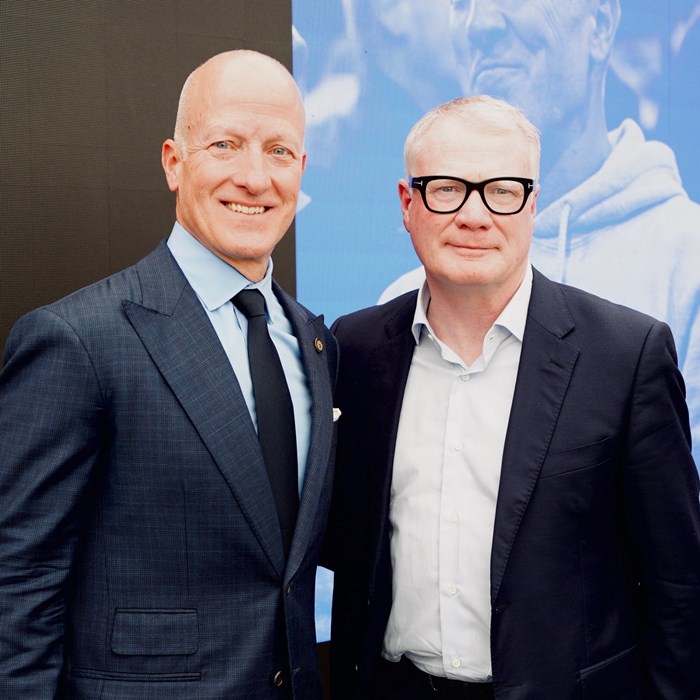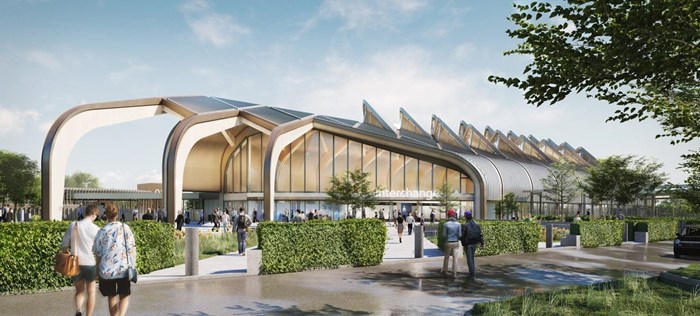A new tram route is being built that will extend the network to East Birmingham, improving connections for local people and unlocking billions of pounds in private sector investment.
Funding for the project – which will kickstart Birmingham’s huge Sports Quarter regeneration project – has been made available as part of a £2.4 billion Government boost to the West Midlands transport network.
The funding follows talks between the Government, the Mayor and Birmingham City FC owner Tom Wagner whose Knighthead company is poised to inject billions of pounds into the area as part of his Sports Quarter project.
The Metro extension is the key to unlocking Knighthead’s investment plans which aim to release the area’s untapped potential for economic growth and help tackle poverty in one of the UK’s most deprived areas, creating thousands of jobs and opportunities for local people.
It is also expected to be the catalyst for £3bn of wider investment, delivering more than 1,500 new homes and creating over 8,000 jobs.
About the Sports Quarter
At the heart of the Sports Quarter project is a new 60,000 seat stadium for Birmingham City FC which will be built on the Birmingham Wheels site in Bordesley. Alongside it will be a sports campus of training facilities, a new academy, and community pitches, all served by a direct Metro tram route.
The East Birmingham Metro Extension will not only provide fans with a fast and reliable connection between the city centre and new stadium but also improve travel connections for local people, opening up new job, leisure and learning opportunities.
The route will connect to the Eastside extension currently under construction, serving key locations including Millennium Point, Birmingham City University, the Curzon Street HS2 station and Digbeth, home to the new BBC Tea Factory and the Digbeth Loc. Studios, set up by Peaky Blinders creator Steven Knight.
It will also act as a springboard for longer term plans to take the tram from the Sports Quarter out through the east of the city to North Solihull, the airport, NEC, HS2 Interchange and surrounding Arden Cross regeneration zone.

Tom Wagner with West Midlands Mayor Richard Parker
The Mayor said: “This funding means we can now deliver a new Metro line to the Sports Quarter - connecting it to Birmingham city centre and unlocking one of the most significant private investments our region has ever seen.
“But this is just the beginning. This investment unlocks a nationally significant infrastructure project that will transform East Birmingham and North Solihull into one of the UK’s key growth corridors - driving thousands of new homes and jobs and bringing opportunity to communities that have been held back for too long.”
Ambition for the future

Wider plans to take the tram route from the Sports Quarter to the airport would unlock even more investment and growth across East Birmingham and North Solihull, bringing real change for local people through better jobs, better homes and better opportunities in life.
It could unlock around £10 billion of private investment, 55,000 new jobs and 7,700 homes helping to tackle the area’s long-standing inequalities.
The East Birmingham and North Solihull tram extension would give local people and businesses:
- Faster travel and better connections– between key locations for work, leisure, healthcare and learning
- Less congestion – along one of the region’s key routes in and out of the city centre
- New homes near tram stops, affordable, sustainable, and close to opportunity
- Cafés, shops and start-ups popping up in neighbourhoods that had been left behind
- Safer, greener streets, with new parks and spaces for walking and cycling
- Pride returning to local communities, and a new sense of possibility for families and young people

HS2 Interchange Station. Image: HS2 Ltd